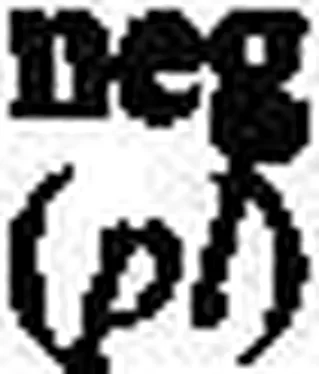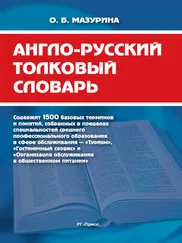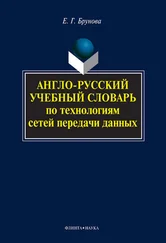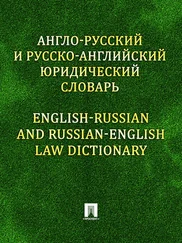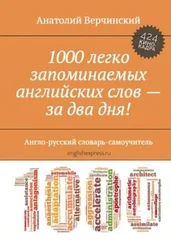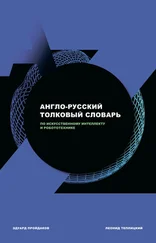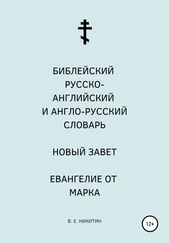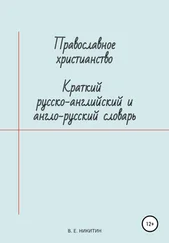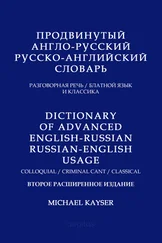Е.А.М.Уилсон - Англо-русский учебный словарь 1984
Здесь есть возможность читать онлайн «Е.А.М.Уилсон - Англо-русский учебный словарь 1984» весь текст электронной книги совершенно бесплатно (целиком полную версию без сокращений). В некоторых случаях можно слушать аудио, скачать через торрент в формате fb2 и присутствует краткое содержание. Год выпуска: 0101, Жанр: Старинная литература, на русском языке. Описание произведения, (предисловие) а так же отзывы посетителей доступны на портале библиотеки ЛибКат.
- Название:Англо-русский учебный словарь 1984
- Автор:
- Жанр:
- Год:0101
- ISBN:нет данных
- Рейтинг книги:4 / 5. Голосов: 2
-
Избранное:Добавить в избранное
- Отзывы:
-
Ваша оценка:
- 80
- 1
- 2
- 3
- 4
- 5
Англо-русский учебный словарь 1984: краткое содержание, описание и аннотация
Предлагаем к чтению аннотацию, описание, краткое содержание или предисловие (зависит от того, что написал сам автор книги «Англо-русский учебный словарь 1984»). Если вы не нашли необходимую информацию о книге — напишите в комментариях, мы постараемся отыскать её.
Англо-русский учебный словарь 1984 — читать онлайн бесплатно полную книгу (весь текст) целиком
Ниже представлен текст книги, разбитый по страницам. Система сохранения места последней прочитанной страницы, позволяет с удобством читать онлайн бесплатно книгу «Англо-русский учебный словарь 1984», без необходимости каждый раз заново искать на чём Вы остановились. Поставьте закладку, и сможете в любой момент перейти на страницу, на которой закончили чтение.
Интервал:
Закладка:
Translation by single words seldom enables the student to use these words in a living context. The illustrations are designed to provide such a context. They also show the difference between the two languages in construction and grammar where rules apply. For example, translation of the English predicative adjective does not always in Russian follow directly from the attributive form, e.g. unconnected sentences несвязные фразы, but the two events are quite unconnected эти два события никак не связаны между собой.
Illustrations also serve to familiarize the student with Russian word combinations and word order, and with the typical flow and rhythm of the Russian sentence, none of which can be deduced a priori. Though word order in both languages is flexible, varying according to emphasis, nevertheless there are standard patterns of order where the two languages differ, e.g. she walked in her sleep last night сегодня [NB] ночью он ходйла во сне. Again the invariable English cadence is supply and demand, but the Russians prefer спрос и предложение.
LAYOUT
All English words and phrases are printed in bold type. Indicators (of style, meaning, etc.) are printed in italics. Long entries are divided; each division is numbered, begins on a new line and is inset. But short entries which can be taken in at a glance, may contain no divisions, even when these would be justified semantically.
ORDER WITHIN AN ENTRY
Usually an entry or division starts by giving one or more general translations. Examples then follow grouped around the general translations in the order in which these were' given; then come examples which are not covered by any of the general translations.
Within an entry or division, direct uses are given first, followed by specialized, colloquial direct, figurative and then figurative colloquial uses. In big entries figurative uses are often treated in a separate division. Attributive uses of a noun come at the end of the entry or of the appropriate division.
The divisions of an entry normally depend on the different shades of meaning in which the English headword is being used, but, exceptionally, divisions may be given over to translations of a single English meaning by particular Russian constructions, if it seems that to do so will make for a clearer understanding by the English learner.
Transitive and intransitive uses of a verb are treated separately. In the case of the larger verbs, uses with prepositions or adverbial particles are given separately as headwords in alphabetical order, and they are similarly divided into transitive and intransitive uses.
TRANSLATION OF HEADWORDS
A number of entries open with a colon and proceed straight to the examples. This happens when no sufficiently general translations of the headword suggest themselves. A translation which only suits one use of the headword is always shown in context: it is misleading to give one-time uses in a way that suggests that they can be widely applied.
Again Russian definitions or explanations of the headword are avoided. The student is looking for Russian equivalents usable (when properly inflected) in live context. To translate some (pronoun ) by некоторое количество is an explanation, and it is most unlikely to be the correct translation of some (pronoun) in any given context. Again приветствие is a correct translation of welcome (noun), but, in the four common examples chosen in the text, it is not used once. In such a case the student is less likely to be misled if the entry opens immediately with translations of the common contexts, or of the set combinations in which the headword is normally used.
GRAMMATICAL INDICATIONS
Each headword is followed by its grammatical label in abbreviated form: n — ndun, adj —adjective and so on.
The constructions following a Russian word are always shown, either in abbreviated form, e.g. любовь к + А привыкнуть к + D or+ inf, or they may be shown in examples, and often in both ways.
A number of explanatory notes on grammar and construction are provided in square brackets; or the student's attention may be drawn to an unexpected usage with an NB in square brackets.
Knowledge of the aspects of Russian verbs is of such fundamental importance that, even at the cost of much repetition, aspects are noted in all verb entries.
Inflexion and changes of stress are shown for numerals and pronouns which are one-time entries. Otherwise these are not shown, as a Russian word may recur in many entries and repetition of the information under each entry or cross-referencing would alike be uneconomic.
STYLISTIC AND FIELD LABELS
Stylistic and field labels are given in italics without brackets, thus: joc —jocular, fig —figurative, CQ —colloquial. Field labels begin with a capital letter, thus: Bot —botany, etc. The indication is given immediately after the headword if it applies to the whole entry, otherwise just in front of the appropriate part of the entry. Specifically British, American or Russian uses are marked (UK), ( US) or (SU) respectively.
INDICATORS OF MEANING
Indicators of meaning are given in italics and round brackets where necessary, to show in which sense an English word or phrase is being used, or which sense of the headword a division covers. E.g. affect vt 1 (influence)...
(move)...
(pretend)...
Indicators are also used to differentiate between shades of meaning where more than one Russian translation is offered, e.g. deliberately adv (on purpose) нарочно, преднамеренно; (slowly) неспешно; (cautiously) осторожно.
Translations which are synonyms or "near synonyms" are divided by a comma; if they differ more widely by a semicolon. However, true synonyms are very rare, and every effort has been made to differentiate shades of meaning of Russian words, not only by indicators, but also by examples. Where one or more of the "near synonyms" may be used in an example as alternatives, these are shown.
NOTES FOR USERS
ORDER OF THE ENTRIES
Strictly alphabetical order is followed. Grammatical homonyms of words related in meaning are distinguished by their grammatical labels, and are treated as separate headwords in the following sequence: noun, adjective, adverb, preposition, verb, thus: round n round adj round* adv round prep round vti
Homonyms of different meaning are distinguished by superior numbers and treated in the same sequence, in the order of their Superior numbers, thus: fasti nR ei fast 1 vi
fast 2 adj (firm) fast 2 adv fast 3 'adj (quick) fast 3 adv
PRONUNCIATION
Phonetic transcriptions of English words are not given. Russian pronunciation is indicated by stress marks. Alternative stresses are marked only if both stresses are in current use.
USE OF THE TILDE
The tilde sign stands for the whole English headword when repeated in an entry, thus: face л...; ~ to ~ лицом к лицу (= face to face); correct v/...; the teacher ~ed my essay... (= corrected).
Читать дальшеИнтервал:
Закладка:
Похожие книги на «Англо-русский учебный словарь 1984»
Представляем Вашему вниманию похожие книги на «Англо-русский учебный словарь 1984» списком для выбора. Мы отобрали схожую по названию и смыслу литературу в надежде предоставить читателям больше вариантов отыскать новые, интересные, ещё непрочитанные произведения.
Обсуждение, отзывы о книге «Англо-русский учебный словарь 1984» и просто собственные мнения читателей. Оставьте ваши комментарии, напишите, что Вы думаете о произведении, его смысле или главных героях. Укажите что конкретно понравилось, а что нет, и почему Вы так считаете.
